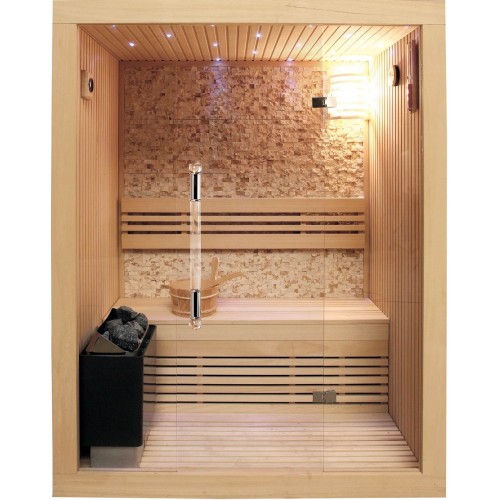Indicators on Traditional Sauna You Should Know
Indicators on Traditional Sauna You Should Know
Blog Article
Our Traditional Sauna Diaries
Table of ContentsTraditional Sauna for DummiesSome Ideas on Traditional Sauna You Should Know6 Simple Techniques For Traditional SaunaSome Ideas on Traditional Sauna You Need To KnowSome Known Facts About Traditional Sauna.
The majority of the weight lost in a sauna is water loss and is re-gained upon rehydrating. However, without a doubt sauna can be an essential part of a healthy weight reduction program. To look at the differences between typical and IR saunas, I will separate these right into verifiable, theoretical, and fabricated differences.Thus, the most popular factor in the saunawhich is at the ceiling straight above the sauna heateris generally between 185 and 190 F. Claims that a conventional sauna exceeds 200 F is just not true and not applicable for electrical saunas marketed in the United States. The temperature for a far-infrared sauna is generally established between 120 and 140 F; nevertheless, unlike the traditional sauna, the objective in and IR space is not to attain a high temperature level.
Due to this, the temperature level distinction is almost unnecessary, because excessive sweating results in both sauna kinds, however the approach of heating the body is different. In an IR sauna the bather will feel warm and will sweat a lot, yet at much lower temperatures (Traditional Sauna). Therefore, if the goal is to spend longer periods of time in the sauna, the IR sauna is a great choice
When a typical sauna has been appropriately heated, the sauna walls are warm, the air temperature level has actually achieved set temperature level and the rocks are very heated. As a fascinating side note, the warmed walls and the rocks are releasing far-infrared heat, integrated with the warmed air, to create an "wrapping up warm".
Facts About Traditional Sauna Revealed

When the high temperature is attained, the aspects cycle on and off to preserve the heat. Most traditional sauna users appreciate putting water over the rocks to develop vapor to increase sauna humidity levels. The advantages of putting water over the rocks consist of: making the space a lot more comfortable, moistening the nasal flows, and allowing the use of aromatherapy by blending crucial oils with the water.

When the energy enters the body, it creates the body temperature to raise and eventually causes sweating. In an infrared sauna it is necessary for the emitters/heaters to stay on almost frequently. Since there is no mass of rocks to preserve warm, the sauna will certainly cool if the emitters closed off.
As stated above, the visit the site sauna bather in an infrared area wants to position himself before running emitters to get optimal take advantage of the heat. The home Continue heating time for the 2 rooms can be extremely various, depending upon just how the rooms are utilized. For a traditional sauna, a bather must allow 30-40 mins for the room to attain a wanted temperature level and to effectively pre-heat the rocks.
Traditional Sauna Can Be Fun For Everyone
A well constructed sauna will normally attain a temperature of 150-160 F in regarding 30-40 minutes. For hotter temperature levels, the room might need to heat for a longer duration. As soon as the space achieves set temperature level, the heating system will cycle on and off, usually running concerning 50% of the moment. The insulated wall surfaces and the warmed rocks will keep the room warm and at steady temperatures.

Typical saunas have a tendency to be bigger (thus make use of more electricity) than infrared saunas, although standard saunas are certainly readily available in one and two individual sizes. For a two-person typical sauna, 5x6 or 5x7 size is most popular. The leading bench can easily seat 2 or three people and is additionally long enough to exist down throughout the sauna session.
Traditional Sauna Fundamentals Explained
The average expense per kWH of electrical power in the U.S. is about $0.11, so a 4.5 kW heater will set you back about $.50 to compete one hour, if the heater runs constantly for one hour. Generally a sauna heating unit will run for 75% of the initial hour and 50% of subsequent hours on since the components cycle once the established temperature level is achieved.

There is a seldom gone over distinction in the social experience between the two spaces. While our culture has actually lost several of the social advantage of the conventional sauna experience, it can be extremely socially rewarding (Traditional Sauna). From household time in the sauna, to heart-felt conversations with significant others, to sauna partiesthe conventional sauna experience can result in intimate socializing
The Buzz on Traditional Sauna
The majority of greater end infrared spaces include tinted light treatment, stereo and full-glass fronts. The dimension of the majority of spaces enable 2 people to easily use the area, while some designs may permit a 3rd or 4th individual to use the space. Custom infrared spaces are also readily available, with space dimensions available up to 7' x 8' x 7' high.
Report this page